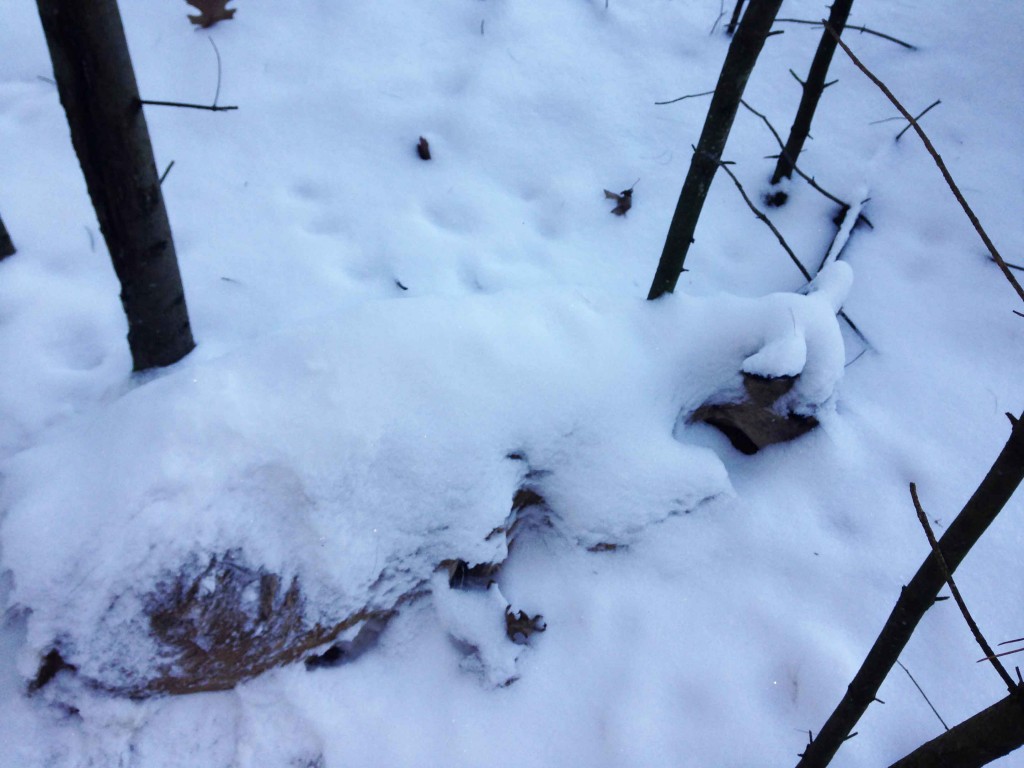
While traipsing the woods yesterday in an attempt to fill one final tag for the season, I came across the sad, solemn sight. It was a yearling doe, frozen to death in her bed.
What I found most unusually about this deer is that is died with its head slightly off the ground and its legs tucked underneath its body in a perfect “bedded” position. It was almost as if the deer froze to death while asleep. I know that was not the case.
Although our region has been subject to below-zero temperatures and wind-chills surpassing Minus 35, I know for certain this deer was not a casualty of starvation. Deer simply don’t starve to death in mid-December. Especially deer living in an area where farmland meets hardwood forests.
Was this doe a casualty of the recent firearms season? Perhaps. It could have also been weakened or sick. Or maybe it sustained an injury from an automobile. It’s anyone’s guess. The carcass was so frozen that I couldn’t even budge it from its icy bed.
Over the years, we’ve learned a lot about white-tailed deer and starvation. These findings have been reported many times in Deer & Deer Hunting Magazine. What we do know is that whitetails usually show little or no viable effect of starvation until shortly before death. The typical fuzzy-faced look of a 9- to 10-month-old fawn, however, is one of the first indications of poor winter health.
The only way of confirming starvation is the age-old bone-marrow test. When a deer’s bone marrow turns red, it becomes jelly-like instead of its normal rich creamy-color, all the fat cells have been absorbed, proving the animal died of starvation.

Deer researchers have studied starvation in whitetails for decades. Eighty to 90 percent of the starvation victims are the previous spring’s fawns. During harsh winters, these little deer can be found staggering and floundering in deep snow until they cannot get up. Once they lose a critical amount of body weight (usually during the last week of February) death is almost certain. Deaths will typically occur between February 20 and March 5.
Carcasses of starvation victims are typically found on the lee sides of hills and north-facing trees.
When a deer is in starvation mode, first the fat over the rump and the saddle disappears.
Shortly afterward the deer begins to lose that slick, early fall appearance. As the fat under the skin is lost, the skin hangs loosely. Fatty tissue around the heart and in the abdomen around the lower organs is used and the animal has now developed a typical fuzzy-faced look.
The final stage is an almost complete loss of fat from the normally creamy-pink bone marrow with the fat completely gone — proof of starvation.
— For more insights on deer behavior, biology and research, check out 30 Years of Deer & Deer Hunting.

